Saudi Arabia officially known as Kingdom of Saudi Arabia, with a land area of approximately 2,150,000 sq. km is the largest sovereign state in the Middle East, the second-largest in the Arab world, the fifth largest in Asia and also not known to many people that it’s the 12th largest country in the world. Saudi Arabia is also referred as ‘The land of the Two Holy Mosques’ in reference to Al- Masjid al-Haram (in Mecca) and Al-Masjid an-Nabawi (in Medina), the two holiest places in Islam. The official language in the country is Arabic. Riyadh is the capital Saudi Arabia and besides being the largest city in Saudi Arabia, it is also the most populated city in Arab world with a population of 6.9 million people.
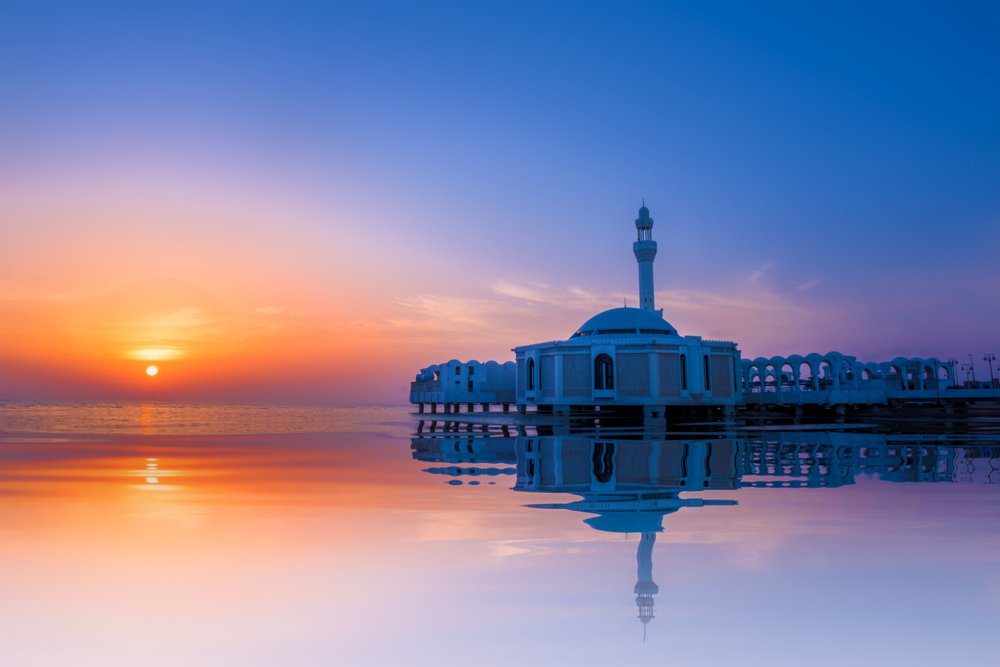
Jeddah is the second largest city in Saudi Arabia with a population of over 4 million people. Also Jeddah is the gateway to Mecca and Medina. Besides visiting the holy places, there are lots of things to do in Jeddah. You can start by visiting Saudi Arabia’s first aquarium the Fakieh Aquarium. The aquarium is home to over 7,000 aquatic animals in over 200 species. They also have the dolphins show three times a day and a wonderful acrylic tunnel that allows the visitors to watch the amazing sea creatures closely. If you are fond of outdoor activities a visit to the Silver Sands beach is a must, besides being picturesque you can indulge in a host of activities like snorkeling, windsurfing and diving etc. Do keep in mind that’s it’s a private beach as there’s a cover charge to enter. There is also the world’s tallest unsupported flagpole measuring 171.4 meters. The iconic flagpole located in the heart of the city is one of the must see attractions. There are plenty of souq’s in Jeddah and the one that really makes an impression is the Gabel Street Souq, The market dates back to the 1950’s and you can find the locals and tourists searching for the best deals in electronics, perfumes, spices, dates, honey and much more. Also located on the coast of the Red Sea and Jeddah Corniche, is Jeddah’s floating mosque also called Masjid Al-Rahma. The mosque is open 24 hours a day and is one of the most visited mosques in Jeddah. The reason it’s called the floating mosque is, as it appears to be floating on its pillars.
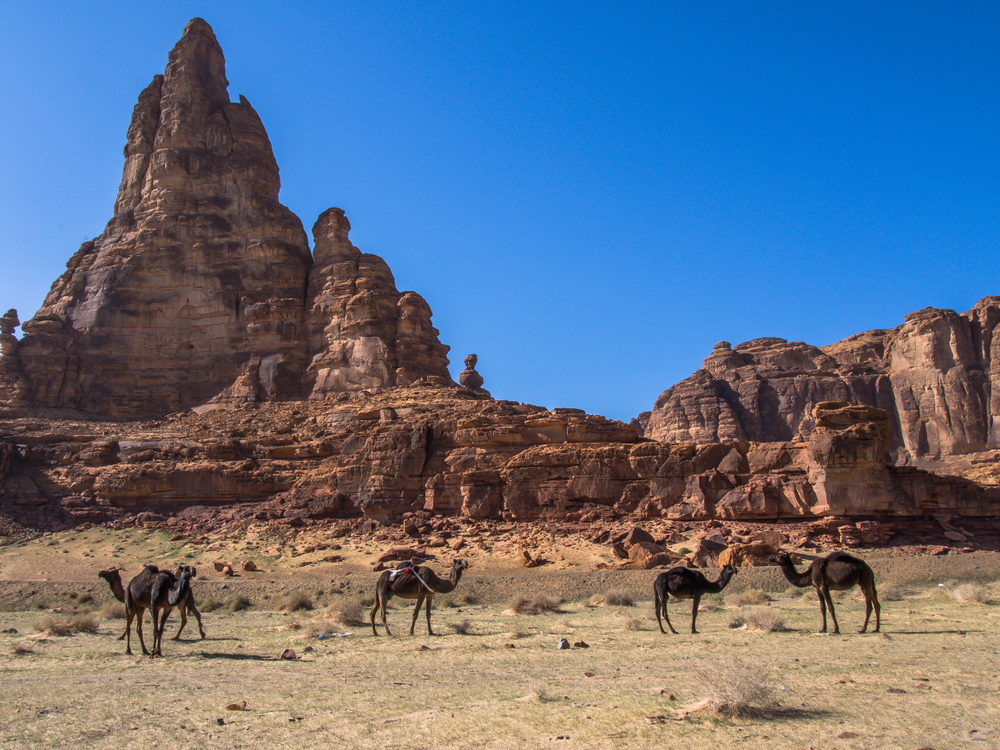
The Holy land has also been blessed with five UNESCO World Heritage Sites with each five of them displaying an important piece of history that has survived the test of many civilizations. The first site to be inscribed by UNESCO was in 2008 and it was the Al-Hijr Archealogical Site (Madaiah Salih). It dates back from the 1st century BC to the 1st century AD and has some well-preserved tombs with decorated facades dating back to the pre-historic times. Due to its growing popularity, the site draws tens of thousands tourists a year to learn of its cultural and historical significance. The second site to be included in the list was the Al-Turaif District in ad-Dir’iyah in 2010, according to the scriptures Al – Turaif District was founded in the 15th Century. Upon entering the Al – Turaif District one can view the remnants of palaces and an urban ensemble built by ad- Dir’iyah oasis edge. From the year 1976 Al- Turaif has been under the protection of antiquities as stipulated by the Saudi Law. Located on the eastern shore of the Red Sea and also known as the Gate to Mecca is the third site on the UNESCO world heritage site called Historic Jeddah. It was inscribed in the year 2014. From the 7th Century AD, it was established as a major port for Indian trade routes, channeling goods to Mecca. It was also the gateway for Muslim pilgrims to Mecca who arrived by Sea. Also, historic Jeddah is an outstanding reflection of the Red Sea architectural tradition. The fourth site to be included in the list was in the year 2015, it is the ‘Rock Art in the Hail Region’. The Rock Art includes two components situated in a desert landscape region: Jabel Umm Sinman at Jubbah, the Jabalal- Manjor and Raat at Shuwaymis. They show numerous representations of human and animal figures covering 10,000 years of history. It is said that a lake once situated at the foot of the Umm Sinmam hill range has now disappeared, it used to be a source of fresh water for people and animals in the southern part of Great Narfoud Desert. The last site to be included is Al-Asha, which was inscribed in the year 2018. Al- Asha is one of the largest natural oasis in the world, with over three million palm trees producing some of the finest dates in the world. While the majority part of the country is the desert, Al- Asha has palm trees, green plateaus and over 200 naturally occurring springs of warm and cold water.
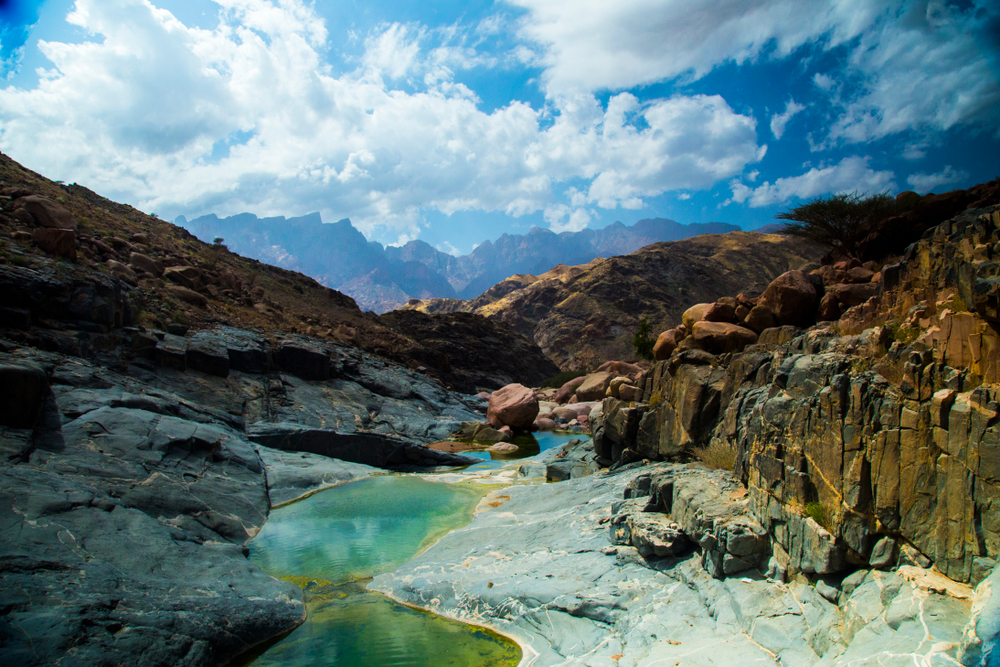
Located in the southern part of the country, in the Asir province with a population of 2,500,000 is the city called Abha. It is 2,270 meters above level making it one of the cooler regions in the country and they do experience a descent amount of rainfall in a year. With oodles of activities to do, it is one of the popular holiday destinations in the country. Among one of the many reasons to visit Asir, is to view the country’s first national park ‘The Asir National Park’, its spread over 1,600 sq.km and home to over 300 species of birds and animals. There are also natural trails, play area for kids and hiking paths. You can also view the highest mountain in Saudi Arabia the Jabal Soodah in the national park. Another thing to include in the bucket list is the Abha famous Cable Car ride, you can take the ride from 3 places Green Mountains to Abha City, Souda Mountains and Habala. From 50-90 SAR per person/per ride, you can get a lot breathtaking views. On the outskirts of Abha is the Habala Hanging village, The people of Habala were originally from the Ottomon empire and they relied on trade and used pulleys to exchange goods up and down the mountain. During the latter part of the year, when the mercury begins to drop, the fog engulfs the mountains and it looks as though the village is floating on the mountains. Another one of the must see places in Abha is the Souq Al Thultha, albeit open 7 days in a week, it is commonly known as the Tuesday market. Located in the Al Muftaha district off King Khaled Street, the circular shaped Souq is home to many vendors selling regional fruits, vegetables and herbs and much more.
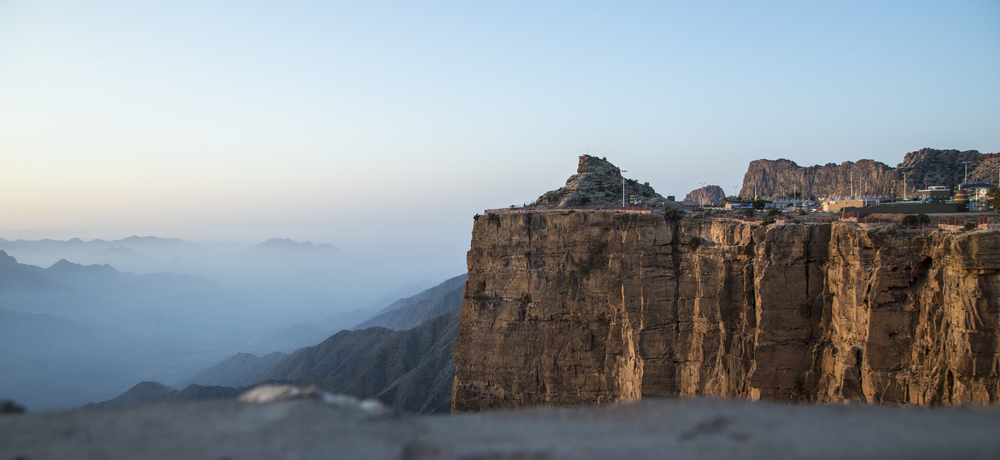
Another popular destination in Abha is the Green Mountain. The real name of the mountain is Jabal Thera and is quite a sight and its gets its name due to the green lighting surrounding the mountain. On the periphery of Abha is the village ‘Rijal Almaa’, the village is home to about 60 palaces built from natural stone, clay and wood. Due to its rich history and culture, in the 2018 Rijal Almaa was also inscribed to the UNESCO World Heritage Site as an architectural icon.
Also, located on the slopes of Sarwat Mountains at a height of 1,879 meters, in the mecca Province is the city called Taif. It’s the fifth largest city in the country with a population of 1,200,000 people. When in Taif, one must visit Al Wahbah Crater and the Shubra Palace. Interestingly Al Wahbah Crater is spread across 1.2 miles and 800 feet and it’s quite a sight. The Saudi Arabia government have been making significant efforts to promote Al Wahbah Crater as a tourist attraction. The Shubra Palace was built in the year 1905 on the orders of Sharif Ali Pasha, constructed over a period of three years with lattice work windows. It is widely believed that King Abdul Aziz used to reside in the palace and later King Faisal used it as a headquarters for the council of ministry of defense and aviation.
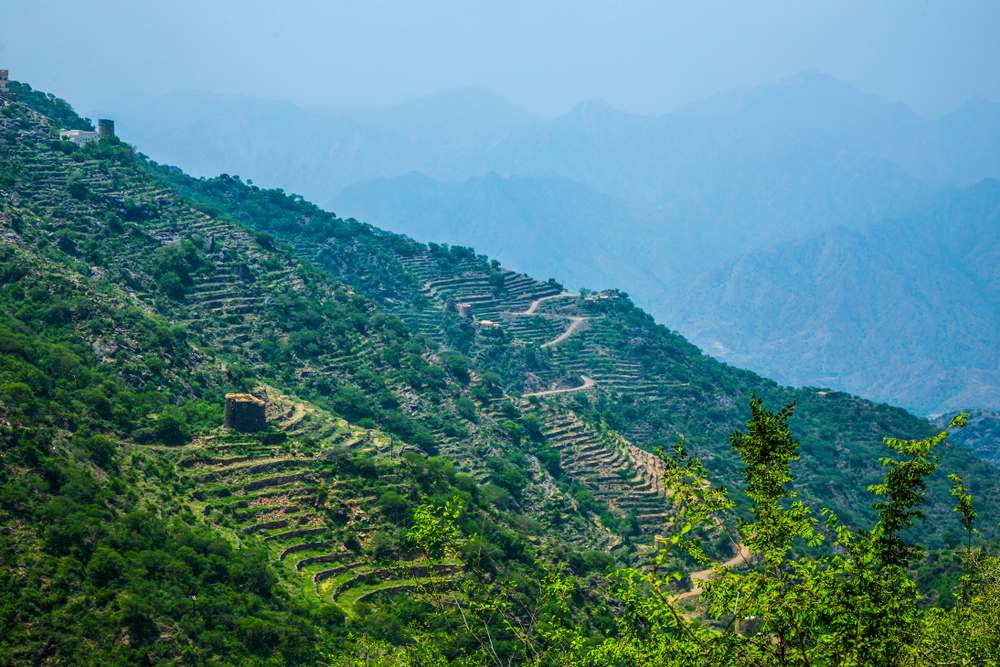
In the Southwest corner of Saudi Arabia located along the coast of the Red Sea is the port city called Jizan. With a lot investments being done, there are a lot of high tech projects being built in the city. On the outskirts of Jizan are the Farasan Islands. There are lots of things to do in the islands like visiting the Mangrove forests being one of them. The Farasan islands are also home to the Mangrove forests. You can also visit the Ottomon’s fort here and Beit Refai, the house which was owned by the eminent Pearl merchant Munawar Al Refai, Beit Refai is also an arty place. It was almost built a century ago. Also, located 75 km from the Kingdom are the Al Khoubah and Bani Maliik hot springs
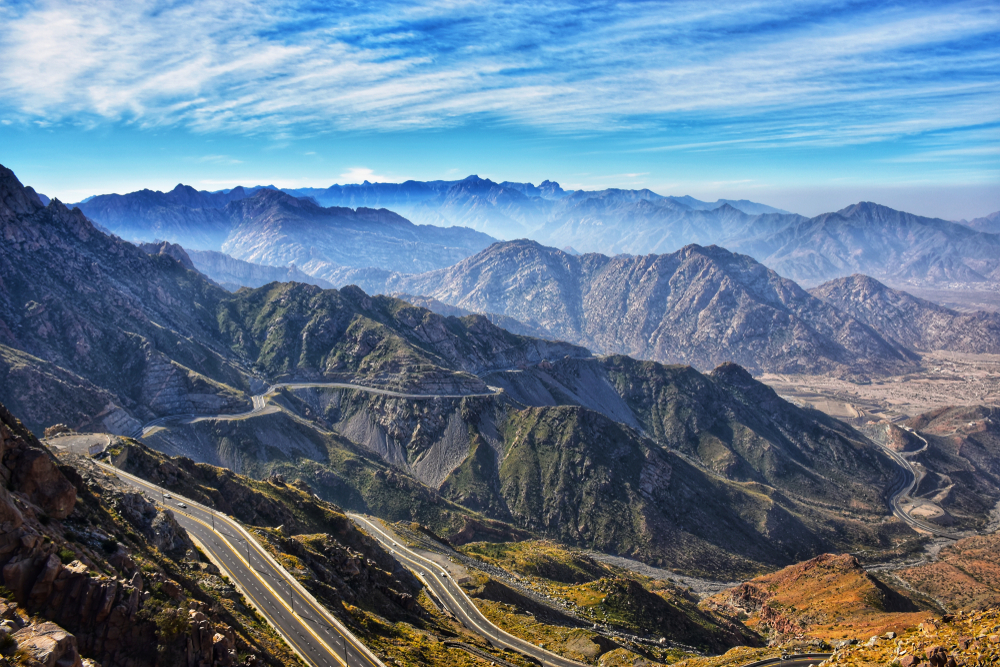
Almost 400 km form Riyadh in Al Qassim region or Gassim (called internationally, with a population of 1,370,727.00, and seventh most populated region in the country it also has the highest per captia in the country. Al Qassim province is divided by the Wadi Al-Rummah (popularly known as the Rummah Valley). It is also the longest valley in the entire Arabian Peninsula as it stretches for about 600 km. Buraydah, in the Gassim province is home to about 50% of the population in Al Qassim province. Buraydah museum located on the intersection of King Fahad and King Abdul Aziz is home to many historical scientific and cultural halls. The museum offers a wonderful opportunity for the tourists and locals to learn about the heritage and culture of Buraydah. The museum is designed like a mini Najd fort, when one can find photos of many Saudi leaders. Also, another place to visit in Buraydah is the King Khaild Park and Garden, as it offers the city dwellers the much needed green space.



